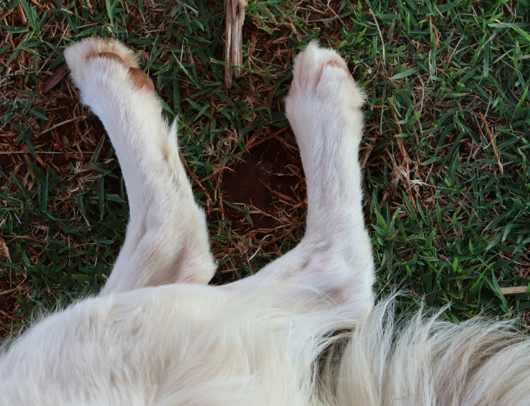Arthritis: What is Causing the Pain?
First we must become familiar with the normal anatomy of a joint in order to understand what is going wrong. The bony anatomy differs depending on the joint in question, but every mobile joint contains at least 2 bones that are covered in cartilage (like a pillow), surrounded by a joint capsule and then filled with fluid to lubricate the motion.
When describing arthritis, you may also hear terms like Degenerative Joint Disease and Osteoarthritis. The word Arthritis means ‘inflammation of the joint,’ while Degenerative Joint Disease describes the subsequent breakdown of joint cartilage, leading to changes in the entire joint (including the bone, ligaments, fluid, capsule, etc).
What causes the inflammation?
• Mechanical stress:
• This is a huge factor with subcategories including: old injuries, surgeries, congenital malformations, joint dysplasias, excess weight, abnormal use, certain breed conformations, ligament damage etc.)
• Age
• It’s not just for the old: 80% of dogs over 8 years old have arthritis, but as much as 20% of dogs over a year old have arthritic changes too! (1)
• Age of sterilization:
• Early sterilization has been associated with increased risk of ligament tears and elbow and hip dysplasia, which is inevitably going to lead to arthritis later in life (2).
• Autoimmune disease
• That can cause the destruction of joint tissues.
• Infection within the joint
• Caused by injuries, systemic disease or medical procedures.
How arthritis develops and progresses
Something (see causes above) initiates the process that leads to certain enzymes breaking down cartilage. These enzymes and inflammatory cytokines erode the cartilage such that the joint surface becomes irregular and rough. It may progress so far that bone is rubbing against bone. The bone is then triggered to start remodeling, leading to spurs as the body attempts to repair the damage. This can lead to a decreased range of motion and pain.
It’s important to note that at the beginning of this process, x-ray may look normal. Bony changes aren’t apparent on x-ray until the disease has progressed significantly (ie so much cartilage is lost that the bone has started to change shape)
So what is causing the pain?
Cartilage does not have nerve endings, but all the other tissues do! The sources of pain include the bones, the joint capsule and the surrounding muscles. This is important to know so that you can treat it effectively. Not all treatment options (including pain meds) will adequately address ALL these locations of pain, which is why it is important to use several modalities for the highest levels of success.
Remember too that at the onset, joint pain will cause your dog to use their muscles less, which will cause the muscles to atrophy (or reduce), which adds extra strain onto the unsupported joints, which makes your dog want to use their legs less, and on and on until you end up with very diseased joints and very little strength to use those legs.
If addressed early, you can do much to maintain your dog’s mobility for a long time. If your dog is over 8 years old, it is wise to assume the process has started!
References:
1. https://pmc.ncbi.nlm.nih.gov/articles/PMC7198754/
2. https://pmc.ncbi.nlm.nih.gov/articles/PMC7359819/
Contributed by Dr. Jacki Dantzler, BVMS, CVA, CVWH.
Section from her ebook coming soon: The Complete Guide to the Evidence-based Holistic Management of Arthritis in Dogs. Follow her on instagram @holisticvetadvice for updates for when the book will be available!



